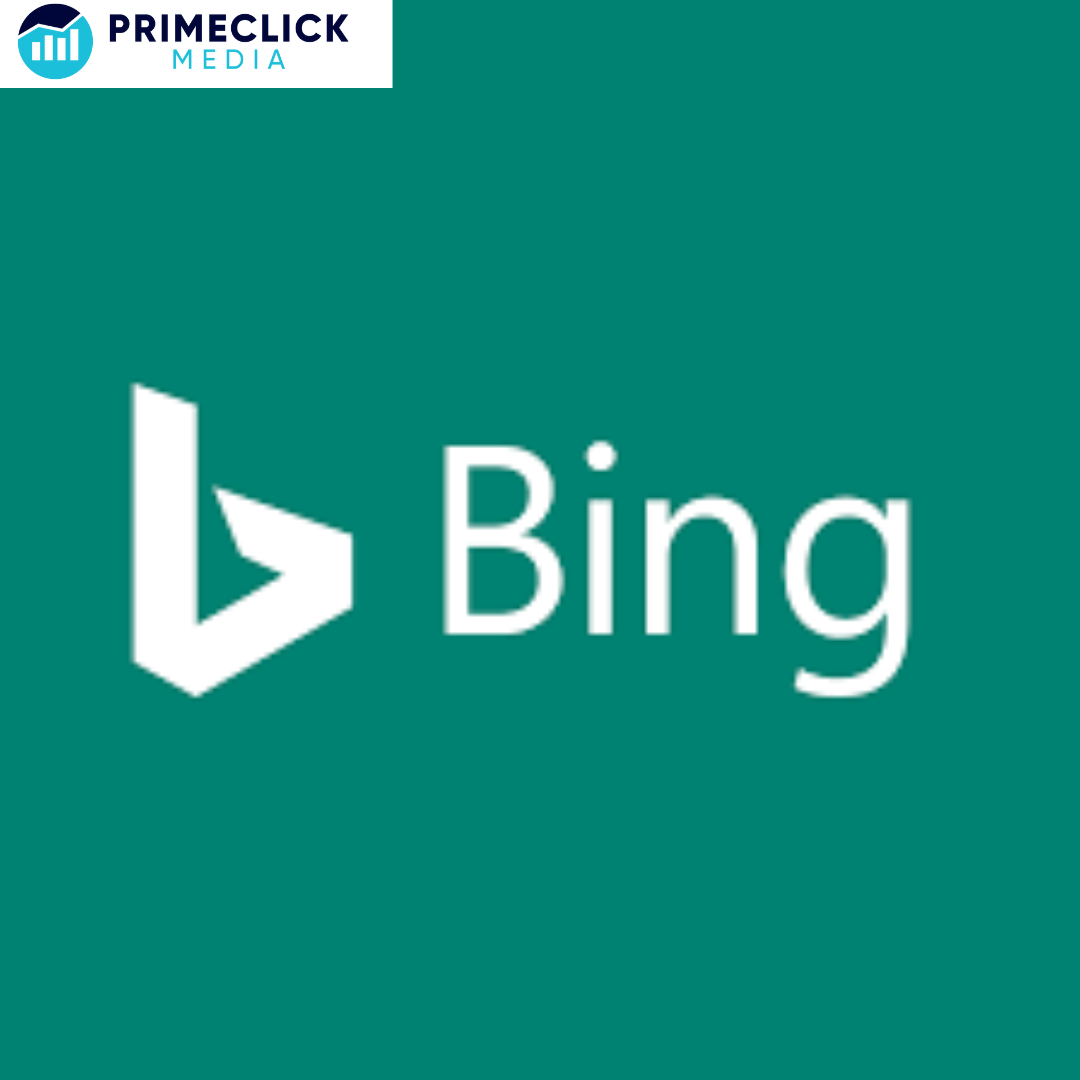Frequently, businesses mistakenly equate search with Google, believing that their growth depends solely on Google being the default search engine. However, we’d like to inform you that while Google is indeed the dominant search engine, Bing ranks as the second most profitable option for expanding your audience. Concentrating on on-page Bing SEO can effectively enhance your brand’s visibility.
What is Bing SEO?
Bing SEO involves optimizing your website or web page to enhance its visibility and ranking on the Bing search engine. Bing, the second most popular search engine globally, captures a significant share of the search market, comprising one-third of search queries and up to 13% of the desktop search engine market.
Additionally, it commands a 6.5% share of the global search engine market. While these figures may appear comparatively modest next to Google, they represent millions of users. If you haven’t yet prioritized Bing as your secondary search engine for your business or brand, it’s advisable to focus on on-page Bing SEO now.
Bing Ranking Factors
The ranking of your web page on Bing is determined by specific criteria known as ranking factors, which are set by Bing and its algorithm. To enhance and optimize your on-page SEO, your web page needs to align with these Bing ranking factors.
- Relevance: To secure top rankings on Bing, your web page must align with Bing’s algorithm by being highly relevant. Bing assesses whether your landing page and the keywords used in page titles, meta descriptions, headings, and other elements are pertinent to the user’s search, fulfill their intent, and provide a solution to their query.
- Credibility: A fundamental factor in Bing’s on-page SEO ranking is the credibility or reputation of your website in the eyes of users. Bing evaluates credibility by verifying if keywords align with user intent and content if you correctly attribute sources and authors, and if your site garners organic backlinks from reputable and non-spam websites.
- User Experience: Bing conducts a detailed analysis of user behavior and satisfaction to determine the suitability of your web page. For instance, it examines factors such as user browsing time, page loading speed, bounce rate, lead generation, and more. These metrics play a crucial role in Bing’s assessment of your web page’s performance.
- Fresh Content: One of Bing’s pivotal ranking factors centers on the quality of your content. Is the content recent, original, and pertinent to users? Bing evaluates the trustworthiness of the content source, whether the content precisely addresses the audience’s query, and if it presents information in an easily comprehensible manner.
- User-specific Location: Bing’s algorithm prioritizes web pages that include their location details. A website lacking contact and location information may raise suspicions among users. Incorporating precise and up-to-date location details for your website, business, or brand, including country, city, pin code, and state, proves beneficial for local users. It also enhances local search results and bolsters on-page SEO performance.
- Page Load Time: Page load time refers to the duration it takes for a page to appear on the search engine, in this instance, Bing. Bing evaluates the time required for a page to display on a user’s screen after clicking and loading. This measurement also encompasses the time it takes to navigate through various sub-pages of the same website. Shorter page load times result in improved Bing rankings.
Benefits of Bing SEO
Many marketers tend to believe that Google is the sole platform to enhance their brand’s visibility, given its status as the primary search engine and its global dominance. However, why limit yourself when you can enjoy the benefits of both? Instead of pitting Bing against Google, consider incorporating Bing as a secondary search engine to potentially double your results.
While Google undeniably holds a strong global presence, many businesses stand to gain by harnessing the strengths of both Google and Bing.
There are numerous advantages to Bing’s on-page SEO. For instance, it is observed that Bing’s user base primarily consists of graduates and postgraduates with higher disposable income. Additionally, a significant portion of Bing searches pertains to finance and B2B companies.
Furthermore, as Microsoft’s default search engine, Bing offers access to millions of users who utilize Microsoft for desktop and voice-assisted searches through platforms like Cortana and Alexa. This presents an opportunity to engage with users in a more favorable financial position to avail of your services.
Top Bing SEO Tips for Every Business
Register Your Business on Bing
The initial stage in enhancing on-page SEO for Bing involves registering your business on Bing, ensuring that users are aware of your presence. You can complete this process through Bing Places, an online platform that can enhance your local SEO rankings. It’s essential to verify the accuracy of all your location and contact details, facilitating easy access for both current and potential customers.
Additionally, you have the opportunity to provide details about your services and showcase engaging photos to create a compelling impression. Make sure that information from third-party sources, such as social media platforms, is also up-to-date and accurate.
Utilize Bing Webmaster Tools
Seeking assistance can often expedite the achievement of your objectives. Employing Bing Webmaster Tools to index and optimize your website can significantly enhance Bing’s ability to crawl your site effectively. These tools facilitate website exploration, backlink analysis, user-friendliness evaluation, and keyword management, ultimately assisting you in reaching your target audience more efficiently.
Prioritize On-Page SEO Factors
There are two primary types of SEO: on-page and off-page. For Bing, emphasizing on-page SEO holds greater significance, as it deems it a pivotal ranking factor. To enhance on-page SEO performance, concentrate on using relevant and appropriate keyword titles, meta tags, headings, URLs, and the introductory paragraph of your main web content.
Avoid keyword stuffing and instead strategically integrate keywords to maintain content coherence. Ensure that your content remains current, unique, and plagiarism-free to attain higher rankings. Furthermore, if you’ve previously conducted on-page SEO for Google, optimizing for Bing should not present an entirely unfamiliar or challenging task.
Create Exceptional Content
What constitutes outstanding content in the eyes of Bing? It should be unique, current, and original. The content must comprehensively address the search query, present information in an easily understandable manner, and cite reputable sources. If the content fails to deliver value to users, Bing may consider it irrelevant and assign it a lower ranking.
Establish High-Quality Backlinks
Backlinks are links on one webpage that lead to another. In the past, individuals aiming to improve their Bing ranking believed that the quantity of backlinks mattered more than their quality. However, Bing now places greater importance on organic backlinks originating from authoritative and well-established websites, as opposed to numerous backlinks from pages that offer minimal real value.
Any involvement in hacked or manipulative link schemes raises immediate concerns for Bing. It is crucial to periodically review your backlinks and remove any spam links from your website.
Engage in Social Media Marketing
Bing places a strong emphasis on social media marketing, and if your presence is robust on popular platforms like Facebook and Twitter, it can positively influence your website’s ranking. It’s important to note that Bing values authentic followers and genuine reviews. Purchasing likes, followers, or shares will not improve your website’s ranking and may hinder it.
Emphasize User Intent
Understanding user intent is crucial for achieving higher rankings on Bing. Similar to Google’s use of RankBrain, its machine learning and artificial intelligence algorithm, to grasp the primary purpose of web pages and whether they align with the target audience’s needs, Bing employs a developing algorithm for the same purpose. Bing assesses content relevance, context, and quality to determine if a web page fulfills user intent.
To achieve this, you must incorporate keywords appropriately in key areas (such as titles, headings, meta tags, etc.) and conduct thorough keyword research to align with the user’s intent behind their search query. Bing Webmaster Tools can assist you in evaluating keyword relevance and identifying trending keywords in your industry or niche.
Bing vs. Google SEO
Bing SEO and Google SEO share certain similarities but also exhibit notable differences. Here’s a concise overview of the key points of commonality and divergence in how these two search engines approach SEO:
- Bing SEO emphasizes local search results, whereas Google SEO prioritizes showcasing the most top-rated websites as search results.
- Bing SEO is optimized for desktop and voice-assisted searches, whereas Google SEO excels in these areas while also being highly compatible with mobile devices.
- Bing SEO tends to elevate web pages that precisely match keywords, while Google SEO considers the context and synonyms of keywords to enhance user experience. Bing’s algorithm is actively improving its ability to understand user intent and context.
- Bing SEO takes into account a website’s social media presence and popularity as positive indicators for higher rankings, whereas Google SEO places less emphasis on social media in its ranking criteria.
Conclusion
In today’s landscape, pitting Bing against Google in your SEO strategy isn’t advisable. Why engage in competition when your business or brand can reap rewards from both search engines? If your primary goal is to enhance your Google SEO, it’s important not to overlook Bing SEO, which presents valuable business opportunities worth considering.





